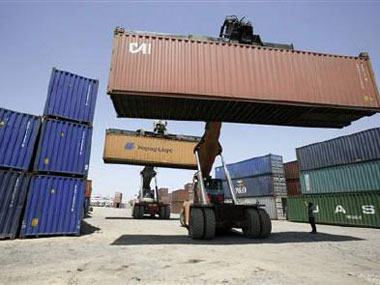When it comes to official data, India seems no better than a banana republic.In the case of India’s vanishing exports, where export figures have been revised downwards by the commerce ministry by over $9 billion in the April-November period this year, it seems to be a case of blind leading the blind.In this case, the commerce ministry’s dubious data is also being used by the Reserve Bank of India (RBI).
[caption id=“attachment_177785” align=“alignleft” width=“380” caption=“Our export data is essentially gi-go, garbage in and garbage out, and it does not seem to bother either the commerce ministry or the Reserve Bank. Reuters”]
 [/caption]
[/caption]
On 9 December, Commerce Secretary Rahul Khullar announced that his number-crunchers had got their export data wrong , and that actual figures were overstated for engineering exports by around $15 billion and understated for petroleum and gems and jewellery by $12 billion. After netting these off and making other data corrections, the export figures were brought down by $9.4 billion.
One would have assumed that was that, but on 30 December, the Reserve Bank dropped its own bombshell by reducing export numbers for the first quarter of 2011-12 by $ 6 billion.
What? Does the RBI not know how to count its export earnings? All it has to do is to add up the money remitted, and we will know how much is really earned on merchandise or other exports?
Well, you have another thought coming. The RBI, it seems, does not put out numbers based on the cash coming in, but on the basis of what the Directorate-General of Commercial Intelligence and Statistics (DGCIS) tells it. Yes, this is the same DGCIS which revised its figures on exports downwards in early December, and which Khullar reported to the media.
At his press conference, this was how Khullar dismissed the goof-ups. “I have always maintained that these are provisional and unreliable numbers. Because of the ongoing controversy on how reliable the numbers are, we have gone back to the books, we corrected the numbers and we did find mistakes and it has not changed any major thing.”
Wonderful. Our export data is essentially gi-go, garbage in and garbage out, and it does not seem to bother either the commerce ministry or the Reserve Bank.
If DGCIS is giving out “unreliable” numbers, one wonders why the RBI needs to use it. According to The Economic Times, the RBI is taking DGCIS numbers because this is what the International Monetary Fund expects it to do. “As per the balance of payments manual, IMF, which sets out the best international practices and which all member countries are supposed to follow, exports are to be recorded in balance of payments on shipments basis and not on the basis of realisation of exports,” the newspaper said, quoting an RBI spokesperson.
Which brings us to the DGCIS. Why is it dishing out such rubbish numbers? The Economic Times quotes a directorate official as observing: “Only the exports that have some element of duty involved are checked closely. Exports that do not claim duty refunds are recorded as reported by the exporter. There is rampant overinvoicing.”
QED: Firstpost has always believed that the issue is not only about bad data, but also overinvoicing of exports as conditions in tax havens have become hotter. Black money is probably making a comeback through the overinvoicing route.
As early as October, we quoted from a Kotak Securities report which said that the export figures in several areas - engineering, metals and metal products, and automotives, among them - were looking suspicious since the growth reported was too high (Read the story here) .
The funny thing is Khullar’s corrections relate to 2011-12, but the Kotak report mentioned overinvoicing in 2010-11.
Quite obviously, the data misreporting or export scam, has been going on for a while. If it’s the latter, the taxmen should be after them. If it’s the former, it’s an even bigger scam.
If a country as big as India cannot get its numbers right, it’s tantamount to unwittingly cooking the books.
Combine crookery and cookery, and you have a banana republic. Isn’t it time the RBI, the finance ministry and the commerce ministry set up an expert team to fix the problem once and for all?
)